Our Favorites: Exhibitions and Events in 2015
Over the past year, Tokyo Art Beat’s writers and contributors have taken in artworks, exhibitions and events in many venues across the city. Here they reflect on their highlights from 2015.
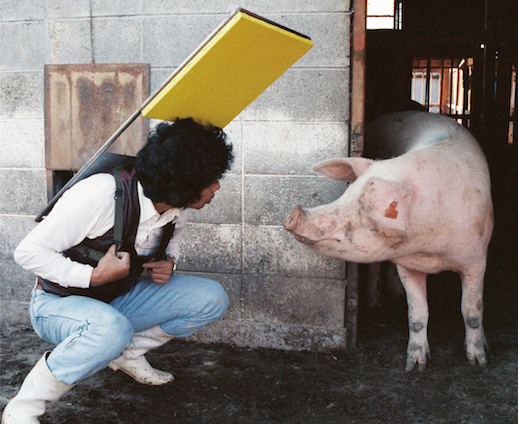
Animal Art 1979–2014 (Tatsumi Orimoto)
In a year, particularly in Europe, concerned with attempts to explain and test the effectiveness of certain political, economic and social systems, Tatsumi Orimoto’s retrospective made many pertinent observations on the politics of communication and action.
The exhibition was, for the most part, composed from documentary material. Unfortunately, I missed the opening performance, ‘Stress of Wheelchair.’ The standout works were video documentations of two performances. In one, part of his ‘Art Mama’ series, Orimoto continues to talk to and take care of his mother (who is hard of hearing and suffers from Alzheimer’s). In the other, ‘Performance (Play with Eight Hundred Chickens)’ Orimoto sits with a red clock amongst a peep of chickens drawing geometric shapes for them, and occasionally scattering around some feed. In both there is an effort of communication, with ‘Art Mama’ directly addressing issues of elderly care and guilt. The performances are humorous and in each the artist exhibits enormous patience throughout his lengthy tasks. There is poignancy in this. He is trying to make things clear.
– Calum Sutherland
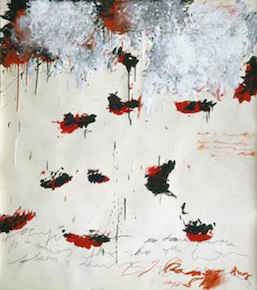
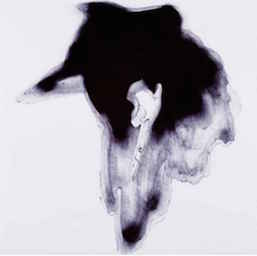
Fifty Years of Works on Paper (Cy Twombly) & Following the Shadow (Chihiro Kabata)
Both these shows were ones I had waited years to see: I counted down the days until Cy Twombly’s Fifty Years of Works on Paper at the Hara Museum. I zipped by the sketches and patterns demonstrating that his work was much more thought-out than it looks, and then I sat on the floor in the final room, staring at his lines and occasionally getting up to see where he had collaged bits and pieces to add colour or to cover something up. A stranger joined me on the floor and together we looked at the colour, the energy, the passion, the complex simplicity of the drawings around us.
Another great expectation was Chihiro Kabata’s Following the Shadow at the Art Front Gallery. Kabata can do things with a pen that nobody else can. She draws layers and layers of lines with a black pen; she draws so many layers that the black ink begins to look purple. Last year she drew on mirrors, and this year she continued to push the limits of her medium and started exploring the possibility of three-dimensional drawings. She tried many papers until she found one pliable enough for her purposes but resilient enough to withstand wear and tear. She drew on a long, thin roll of paper as before, but then attached the paper onto a long, thin sheet of metal that could be wound into shapes, which means that her drawings were also wound into those shapes. Drawing might be one of the oldest art forms around, but Kabata uses the newest technologies applied to familiar materials.
–Michele Zacharias
Fukushima Traces, 2014–2015 & Re:play – Restaging Expression in Film ’72
If I were to summarise this year, I would have to say it’s been 12 months plagued by moments of comedy and farce. The exhibitions that I have been most drawn towards all referenced this absurdity in their own particular ways. Fortunately, I didn’t struggle to draw up a list of like-minded artists whose light heartedness, though sometime wayward and often abject, proved that they are comfortable with criticism of their subject matter and sometimes even their own work.
Shuji Akagi showed a number of photos from his book Fukushima Traces 2011-2013 (Osiris) published earlier this year, alongside more recent works from the past two years at Studio 35 Minutes in March. His photo journal follows movements between home and work, encountering moments of sadness and satire as roadside motivational slogans sit side-by-side with posters offering discounts at the local supermarket and 2-for-the-price-of-1 meal deals. Life carries on regardless.
The real highlight for me this year was the recent was November’s Re: play 1972/2015 – Restaging “Expression in Film ’72” at MOMAT. After an original exhibition at the Kyoto Municipal Museum of Art in 1972, the two-day film exhibition was then unearthed and “restaged” in Tokyo as both a documentation of the original exhibition as well as the filmmaking and art practice of the day. But it also served as an example of sixteen artists’ resistance to making work that relied solely on memory, often overdubbing, mixing and editing the real world as if to draw attention to the spaces of both film and the audience. These works also proved that, seen alongside the likes of Vito Acconci or Bruce Nauman, the video installations remain vitally important.
—Stuart Munro
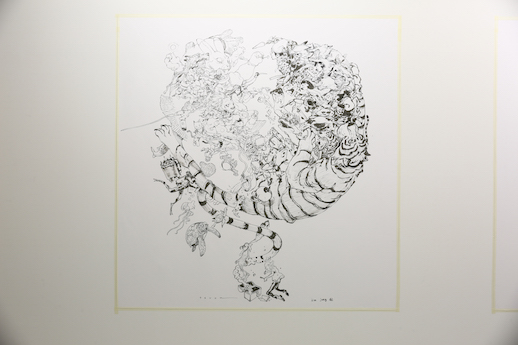
Geisai∞infinity
My art highlights for 2015 were centred around the ongoing installments of Takashi Murakami’s Geisai∞infinity Project. His group of galleries in Nakano Broadway are as minimal as they come, but the talent on display there has kept me coming back. Polish street artist Nawer impressed me with his show “Colors in Shapesland” and the second half of the year lined up spectacular solo exhibitions from JungGi Kim, Katsuya Terada and James Jean. Live drawing sessions from exhibiting artists in the Zingaro Space also added to the experience, giving the audience the chance to peek inside their extraordinary headspace.
–Paul Heaton
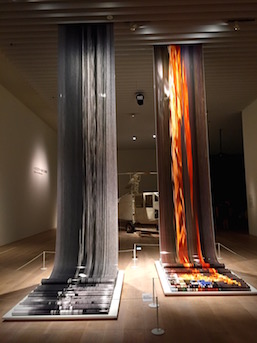
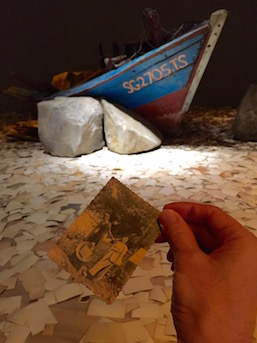
Memory for Tomorrow (Dinh Q. Lê)
This year was a good one for retrospectives and large exhibitions for individual artists. Along with the other examples in this report, I’d like to add Takamatsu Jiro: Mysteries. Extensive and nuanced, it took an engaging approach to a conceptual artist who, through a cerebral summoning of metaphysical “points and shadows,” left an indelible mark on postwar Japanese art.
To me the most impressive show of the year, though, was Dinh Q. Lê’s Memory For Tomorrow. In works of incredible scope and diversity, from a full-sized helicopter, to documentary interviews, to photos woven into film still tapestries, through the lens of Vietnam Lê grappled with remembrance, art, politics, voice, and identity in an exhibition that could not be more relevant now. Delving into collective and individual memories to examine the cultural legacies of war and the immigrant experience, Lê reminds us of something fundamental: we all come from somewhere. We are all trying to secure futures while making sense of the past as it manifests and morphs in strange, horrific, and sometimes, redemptive ways.
Lê’s works are generally not subtle – many scathe, such as his displays of deformed pacifiers and baby dolls. Yet it’s a piece in a more minor key that I think reflects most fully on his practice as an artist; in “Barricade,” a stack of speakers and furniture creates a wall casting a shadow over the opposite side of the room. Lê’s response to this curious silhouette? To place a microphone before it. And this is what he’s doing, really: giving a voice to shadows.
–Jennifer Pastore
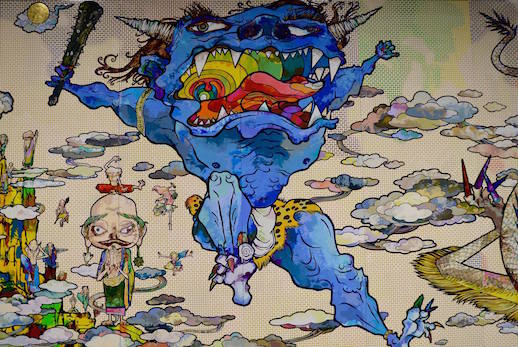
Murals
2015 was a fine year for public murals and paintings on a grand scale. Not only did Japanese artist Imaone collaborate with Italian painter Zed1 to create a public mural with an allegorical feel to it in Kichijoji, but Japan’s most popular overseas export, Takashi Murakami, filled the walls of Mori Art Museum with a mural 100 metres long. That said, there were plenty of interesting works to see with considerably less hype.
The festival that most impressed me was the Yebisu International Festival for Art & Alternative Visions 2015, particularly the Irish artist Duncan Campbell’s documentary film “Make it new John” (2009) about the spectacular downfall of John DeLorean, the maker of the car made famous in the “Back to the Future” movies.
The two exhibitions that I most wanted to continue, that started so absorbingly but seemed to end too soon were Gabriel Orozco’s Inner Cycles at MOT and There and Back Again by Cai Guo-Qiang at Yokohama Museum of Art. 2015 also saw Masato Nakamura’s welcome return to the gallery with Luminous Despair at 3331 Arts Chiyoda, signaling a change of emphasis towards handcrafted objects. Ordinary materials were used in understated but compelling ways by Mono-Ha member Kishio Suga’s well-balanced installations at his retrospective Situated Latency. And, as the year draws to a close, Yuko Mohri won the Nissan Art Award 2015 at BankART NYK by assembling readymades that call on both the improvised plumbing systems at train stations and Marcel Duchamp’s “The Large Glass.” It will be interesting to see what she produces for Roppongi Crossing 2016 next spring.
–Nick West
Situated Latency & Time of Others
Among my highlights this year were Kishio Suga’s solo exhibition, Situated Latency, and the group exhibition, Time of Others, both held at the Museum of Contemporary Art, Tokyo. The former presented the avant-garde artist’s works with great affection, as his elemental installations, made from wood, metal, and stone covered the museum’s best spaces. It was a real pleasure to be in the presence of Suga’s subtle contemplations of form and material. The latter, a collection of artists from across Asia, was a refreshingly bold foray into politics and human suffering seldom seen at Japan’s large institutions. I hope for the exhibition to be a precedent for many more brave curatorial experiments in the coming years.
–Emily Wakeling
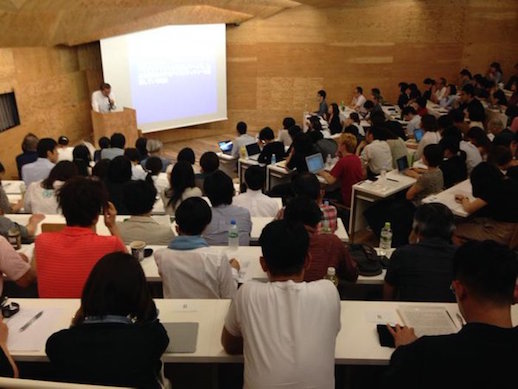
Shakai no Geijutsu Forum (Art of Society Forum)
Rather than a particular exhibition, a series of lectures and symposia have been the highlight of 2015 for me. Shakai no Geijutsu Forum (Art of Society Forum) has been charged with the challenging task of bring sociology and art together in a new critical discourse. With debates ranging from public space and multi-culturalism to exploitation, social inclusion/exclusion, and freedom, the forum aims to introduce key examples of social theory and examine how artists are tackling them in practice.
The discussions have been primarily led by the triad of Chiba University professor of art theory Shingo Jinno, renowned sociologist Akihiro Kitada, and cultural researcher Keiko Takeda of the art collective Dumb Type, while also including respected artists such as Koki Tanaka and Hiroko Okada. Most of the panels have been sell out events, reflecting a strong demand for free critical space outside of the various “alternative art schooling programs” that have risen in popularity in recent years. While the venue and participation has been rather institutionally dominated by The University of Tokyo and Ochanomizu University, the involvement of such figures as Fumio Inoue of the cultural discussion group Camp ensures that the appeal of this program extends beyond mere academia.
The forum has also attempted to break taboos and circles of silence in the art world, as highlighted in its panel on exploitation, in which the abusive practices of both art institutions and artists were given a clinical examination. With further discussions coming up in the new year on gender, sexuality, racism, hate speech and freedom, including a panel on February 20th, 2016 with artist Makoto Aida and Akiko Shimizu, a leading figure in feminist and queer studies, the continued development of this program is keenly anticipated. *All lectures in Japanese only.
—Emma Ota
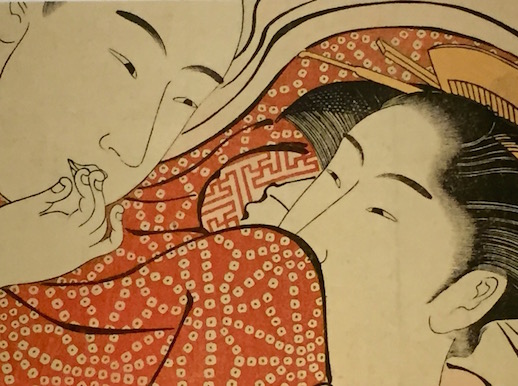
Shunga
For my money, the most important art event of the year was an exhibition of old art with new implications for contemporary society in Japan. The Shunga exhibition may well have had a straightforward title but it broke taboos with its wide-ranging showcase of erotic woodblock prints.
It took the success of the shunga exhibition at the British Museum in 2013-14 and the tenacity of organisers such as former prime minister (and artist) Morihiro Hosokawa to bring the exhibition to Tokyo. Turned down by 20 venues, the show eventually opened at the little-known Eisei Museum in September. The gamble paid off; the exhibition was packed with daily crowds of curious people queuing to see the original erotic prints in their wildly colourful forms. Of course, such images are easily accessible online but there was still a frisson to witnessing these shunga all in one place (literally) in the flesh. The excitement in the air was almost palpable.
The police are still taking the existing anti-obscenity edict seriously and in October warned magazine editors not to publish shunga. So we still have far to go, perhaps, but I hope this exhibition helps nudge Japan’s attitudes towards the representation of nudity finally into the 21st century — not least because Japan has an incredibly rich erotic history that deserves a wide audience. “Cool Japan”? My vote’s for shunga!
—William Andrews
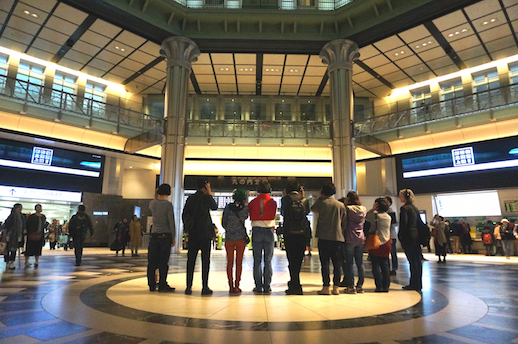
Tokyo Station Gallery Interactive Events & Makers’ Base
“This city can be known only by an activity of an ethnographic kind,” Roland Barthes wrote of Tokyo more than four decades ago. “You must orient yourself in it not by book, by address, but by walking, by sight, by habit, by experience; here every discovery is intense and fragile, it can be repeated or recovered only by memory of the trace it has left in you.”
Indeed! (And can it ever be otherwise?) I’ll take a cue from Barthes and share two 2015 highlights from our weird and wonderful local art scene that celebrated the experiential and keep on tickling sensory memory.
In November Tokyo Station Gallery launched ten days of interactive events inviting people of all ages to explore odd aspects of the station through the fresh perspective of art. One of them, a “sound-collecting tour,” was led by composer and DJ Naoyuki Takeda, a.k.a. Datakestra. Using some 15 sounds emitted by JR ticket wickets and vending machines — stuff we hear, but pay no heed to, countless times every day — Takeda had created a catchy techno-beat tune, a modern-day ode to the historic terminal. Participants were tasked with identifying the sounds, then recording new ones in the station’s northern rotunda. Adults opened up like kids, and the one child in attendance delivered some of the best insights. Art in action — beautiful.
2015 also saw the opening of Japan’s second Makers’ Base, in Sapporo in August. The original venue in Shimo-Meguro marked this well-deserved expansion with a stepped-up program of workshops and talk events, lucky us. If you haven’t yet been, try it out in 2016. Leave a trace of yourself on this city’s creative scene, and you’ll know Tokyo all the better.
—Susan Rogers Chikuba
Tokyo Art Beat thanks all its readers for their support in 2015 and wishes everyone a safe and happy New Year.


